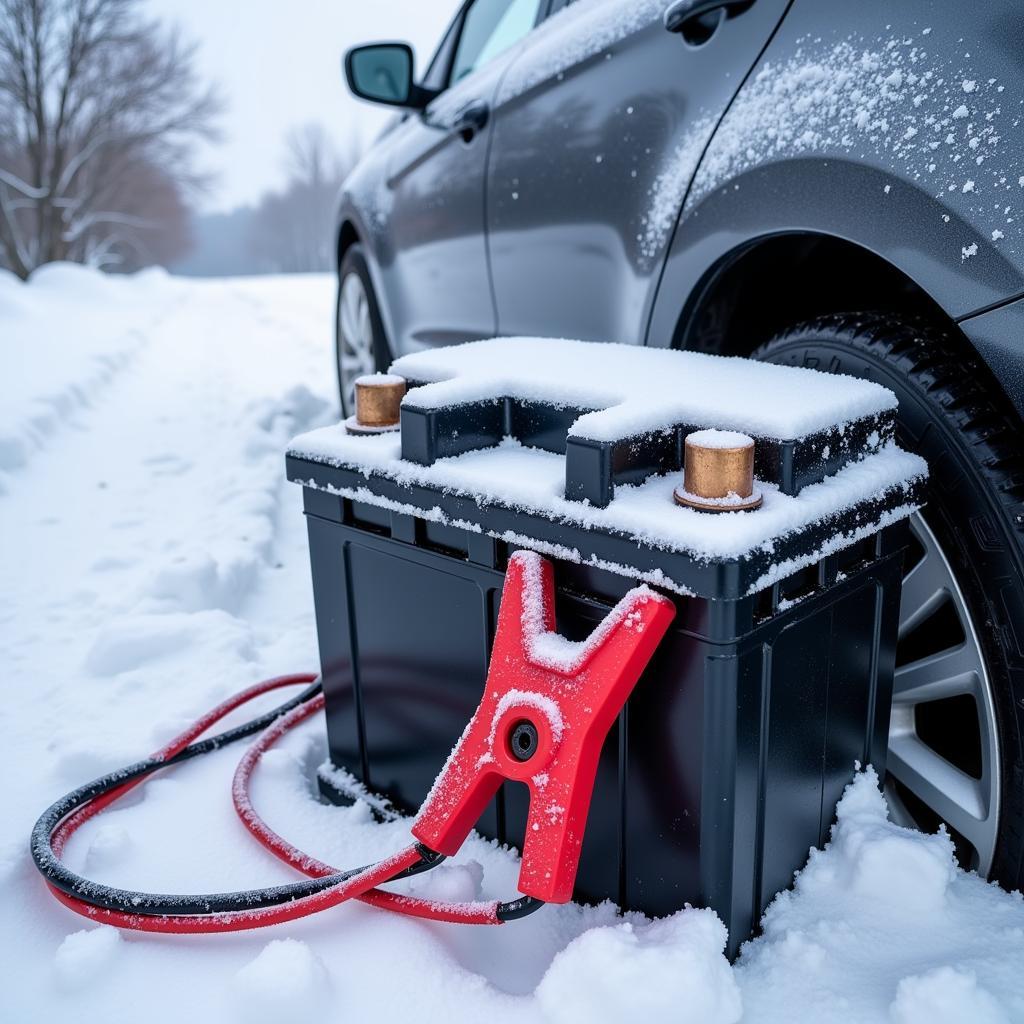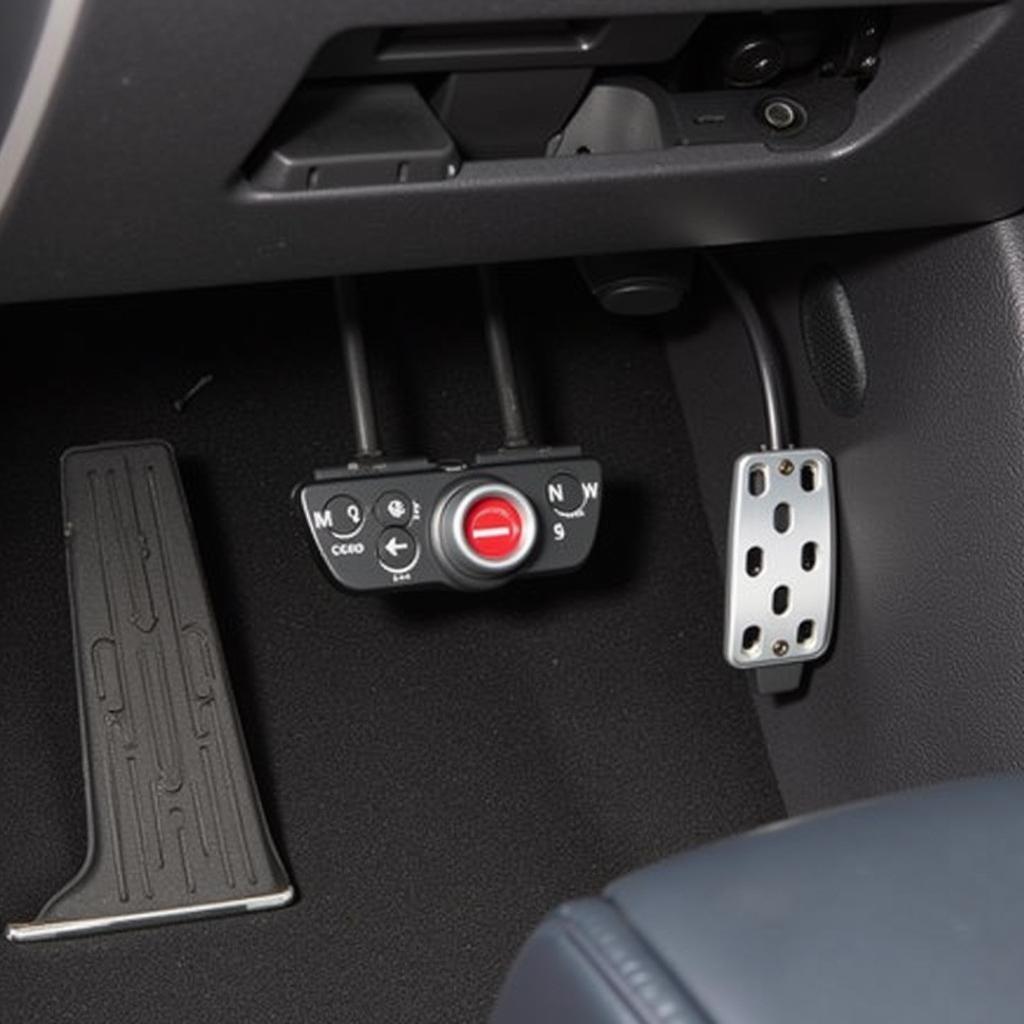The glow plug warning light on your Seat Leon is an essential indicator of your diesel engine’s health. When illuminated, it signals a potential issue with the glow plug system, which is crucial for starting your car, especially in cold weather. Ignoring this warning can lead to more significant problems and costly repairs. This comprehensive guide will delve into the common causes of a Seat Leon glow plug warning light, how to diagnose the problem, and the steps to resolve it.
Understanding the Glow Plug System
Before diving into the causes and solutions, let’s understand how the glow plug system works. In diesel engines, glow plugs are small heating elements located in the combustion chamber of each cylinder. Their primary function is to heat the air inside the cylinders when the engine is cold. This preheating is vital because diesel engines rely on compression ignition, and cold air is harder to compress to the point of igniting the fuel.
When you turn the ignition key to the ‘on’ position, the glow plug light illuminates as the glow plugs are activated and start heating the cylinders. Once the engine reaches a suitable temperature, the light turns off, indicating that the glow plugs have done their job, and you can start the engine.
Common Causes of a Seat Leon Glow Plug Warning Light
A glowing or flashing glow plug warning light on your Seat Leon can be caused by several factors. Here are some of the most common culprits:
1. Faulty Glow Plugs
The most common cause of the warning light is a faulty glow plug. Over time, glow plugs can wear out or become damaged, preventing them from heating up properly. A simple test with a multimeter can determine if a glow plug is faulty.
2. Faulty Glow Plug Relay
The glow plug relay is responsible for supplying power to the glow plugs. If the relay malfunctions, it can disrupt the power supply, causing the glow plugs to fail or work intermittently.
3. Faulty Wiring or Connections
Worn-out wiring, loose connections, or corrosion in the glow plug circuit can also trigger the warning light. These issues can interrupt the flow of power to the glow plugs, affecting their performance.
4. Faulty Engine Coolant Temperature Sensor
The engine coolant temperature sensor plays a crucial role in determining how long the glow plugs need to be activated. If this sensor malfunctions and sends incorrect temperature readings to the engine control unit (ECU), it can lead to the glow plugs not getting enough power or being activated for too long.
5. Diesel Particulate Filter (DPF) Issues
While not directly related to the glow plug system, problems with the DPF can sometimes trigger the glow plug warning light, especially in newer Seat Leon models. The DPF captures harmful soot particles from the exhaust gases. However, it can become clogged over time, leading to various engine performance issues and potentially triggering the warning light.
Diagnosing the Problem
Diagnosing the exact cause of the glow plug warning light requires a systematic approach. Here are some steps you can follow:
- Visual Inspection: Start with a visual inspection of the glow plugs and their wiring. Look for any signs of damage, loose connections, or corrosion.
- Glow Plug Test: Use a multimeter to test the resistance of each glow plug. A reading outside the manufacturer’s specification indicates a faulty glow plug.
- Glow Plug Relay Test: Check the glow plug relay for proper functioning. You can do this by testing for continuity or by swapping it with a known working relay.
- Engine Coolant Temperature Sensor Test: Test the engine coolant temperature sensor using a multimeter to ensure it’s providing accurate temperature readings.
- Diagnostic Scan: If the above steps don’t reveal the issue, a professional diagnostic scan using a code reader can provide more specific error codes related to the glow plug system or other engine components.
Solutions and Repairs
Once you’ve diagnosed the cause of the glow plug warning light on your Seat Leon, you can proceed with the appropriate repairs. Here are the common solutions:
1. Replacing Faulty Glow Plugs
If you identify a faulty glow plug, it’s best to replace all of them simultaneously to ensure consistent performance and longevity. Glow plugs are relatively inexpensive, and replacing them is a straightforward procedure.
2. Replacing the Glow Plug Relay
If the glow plug relay is faulty, replace it with a new one. This is a simple repair that can be done by a mechanic or even by someone with basic mechanical skills.
3. Repairing or Replacing Wiring and Connections
Repair any damaged or corroded wiring and tighten any loose connections in the glow plug circuit. Ensure proper insulation and secure connections to prevent future issues.
4. Replacing the Engine Coolant Temperature Sensor
If the engine coolant temperature sensor is faulty, replace it with a new one. Ensure the new sensor is compatible with your Seat Leon model.
5. Addressing DPF Issues
For DPF-related problems, you might need to have the DPF cleaned or regenerated. In some cases, if the DPF is severely clogged or damaged, it might need replacement. Consult a qualified mechanic for DPF-related issues.
Conclusion
The glow plug warning light on your Seat Leon should never be ignored. Addressing the issue promptly can save you from more significant engine problems and expensive repairs. By understanding the common causes, following a systematic diagnosis process, and taking appropriate action, you can ensure the optimal performance and longevity of your Seat Leon’s engine.
FAQs about Seat Leon Glow Plug Warning Light
1. Can I drive my Seat Leon with the glow plug warning light on?
It’s not advisable to drive your car for extended periods with the glow plug warning light illuminated, especially in cold weather. Doing so can lead to starting difficulties and potential damage to other engine components.
2. How often should I replace my Seat Leon’s glow plugs?
Glow plugs typically last between 60,000 to 100,000 miles. However, it’s good practice to have them checked and replaced if necessary during regular maintenance.
3. How much does it cost to replace glow plugs in a Seat Leon?
The cost of replacing glow plugs can vary depending on the labor costs in your area and whether you choose to do it yourself or have a mechanic do it. On average, you can expect to pay between $50 to $150 for parts and labor.
4. Can a faulty glow plug drain my Seat Leon’s battery?
While a faulty glow plug itself might not drain your battery directly, driving with a faulty glow plug for extended periods can put extra strain on the battery, potentially leading to a drained battery over time.
5. Can I use any glow plug in my Seat Leon?
No, it’s crucial to use glow plugs specifically designed for your Seat Leon model and engine type. Using incorrect glow plugs can lead to performance issues and potential damage to your engine.



